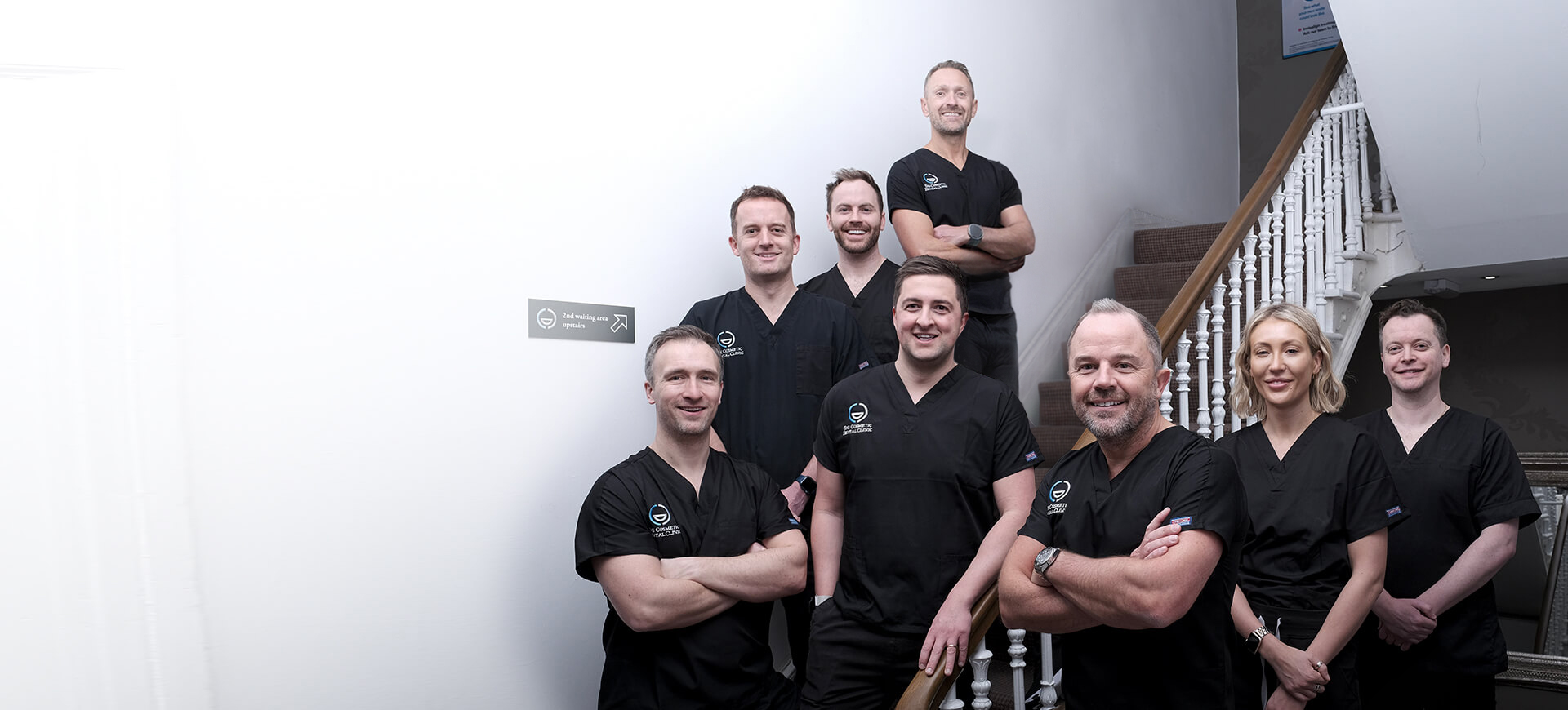

The Northeast’s Home of 澳洲5正规站-综合查询澳洲结果历史 全网数据查询168开奖结果号码 Sensational Smiles
Cosmetic, Restorative Dentistry & Implants
FIND OUT MORE
DR DARREN CANNELL
CLINICAL DIRECTOR

DR ANDY STAFFORD
CLINICAL DIRECTOR
Where Did You Get That Smile?
When The Cosmetic Dental Clinic founders Andy Stafford and Darren Cannell met at dental school in Newcastle back in 1996, they knew they’d found friends for life.
The pals have worked, trained, and played together ever since, studying advanced cosmetic and restorative dentistry with the best in the US before returning to put a smile on the face of the city where it all began…
Since opening the first Eldon Square clinic in 2007, a team of top dental talent has helped Andy and Darren spread the word about the unmatched quality, precision and care on offer from The Cosmetic Dental Clinic—and secured the clinic’s pride of place as a Northeast institution.
MEET THE TEAM
Quality’s the Word
Take a handpicked team of the Northeast’s most skilled cosmetic dentists.
Add the highest quality materials available, including premium CEREC ceramics produced in our on-site lab, up-to-the-minute techniques and outstanding attention to detail.
It all adds up to the best quality cosmetic and restorative dentistry you’ll find anywhere in the Northeast or beyond.


100% Precision
You wouldn’t guess by looking at the historic exteriors of The Cosmetic Dental Clinic’s Newcastle and Durham clinics that a 21st-century dental experience awaits.
Step through the doors, and you’ll discover the latest in digital smile design technology, allowing us to plan your cosmetic dental treatment with 100% precision.
You can even see a preview of your Cosmetic Dental Clinic smile before our team gets to work!
GET IN TOUCHTalk of 幸运澳洲5开🏆官网记录真实视频结果记录 线上检索澳洲结果+幸运号码 the Tyne
Don’t just take our word for it listen to what our patients have to say about The Cosmetic Dental Clinic service.
Shockingly
Good!
Andy says crooked teeth made him reluctant to smile. He says treatment with Invisalign® from The CDC was life-changing.

Regrets?
Not me!
A botched crown made Christine self-conscious, so she turned to the Cosmetic Dental Clinic to set it right. Watch to the end to find out about Christine’s only regret about choosing The CDC!

All in a
Day’s Work
Colin’s sore gums and toothache were no match for The CDC team. He says CDC’s Darren Cannell is a fantastic dentist—and the most ethical professional ever!




Enter the
Invisalign® Zone
Invisalign Diamond Apex—Top 1% of European Clinics!
When it comes to discreet, convenient teeth straightening, we’re the Northeast’s number one, and also among the very best in Europe.
We’ve earned coveted Diamond Apex status awarded to only the top 1% of clinics on the continent.
The Cosmetic Dental Clinic is also home to the UK’s first Invisalign® Zone where you can find out everything you need to know about the world’s favourite removable aligner.
You can also catch a glimpse of your future Invisalign® smile with our digital SmileView software.
FIND OUT MORE

Missing Teeth? 澳洲直播幸运号(5) 全国安全访问入口 168历史结果 实拍の直播现场,公开实时记录结果
Wobbly Dentures?
Restore Your Smile with Implants from the Northeast’s Leading Restorative Team
We know that living with gaps, failing teeth or loose dentures isn’t just bad news for smiles—failing oral health can also leave you feeling low on confidence and unable to live life to the full.
When that’s the case, dental implants from The Cosmetic Dental Clinic offer a brand new lease of life, putting favourite foods back on the menu, and life’s special moments back on the calendar for good.
And with revolutionary same-day implants, you can now experience the life-changing magic of implants in an afternoon.
FIND OUT MORE


Find Us in Newcastle and Durham
You’re never far from The Cosmetic Dental Clinic.
Find us at Old Eldon Square in Newcastle town centre or visit our Old Elvet clinic in Durham.









So Proud…
To be the Northeast’s top-rated clinic for cosmetic and restorative dentistry.
Here’s what patients say about five-star treatment from The Cosmetic Dental Clinic.
Tracey Cusworth
Just finished my Invisalign plus, whitening and bonding with Nigel, I can not thank him enough. I’ve never trusted anyone more, my only regret is that I didn’t do this years ago, 100% faultless service 😊
Janice Worton
I have just completed my Invisalign and veneers treatment which was carried out by Nigel. The service and treatment I received was first class. I am absolutely over the moon with the end results and have received numerous compliments from family , friends and strangers on how nice my teeth look.
Jessica Drury
Absolutely incredible experience from start to finish. I had Invisalign and composite bonding done as my teeth were very overcrowded and uneven. David went through everything and explained things so well. I travelled all the way from Wakefield as I knew the experience was going to be amazing from these guys. There’s even a tele on the ceiling so you aren’t bored whilst you’re in the chair! Such a good touch. I couldn’t recommend them more.
Rachael Luther
Mat Sims was my dentist at the clinic and I couldn’t have asked for a better result with my new smile. Mat and Tiff are both lovely and always made me feel at ease when in the chair and I am so so happy with the way my teeth look. 100% recommend to anyone who would like to invest in their smile, the best decision I’ve ever made.
Adam McVie
Great service. I had Nigel as my dentist, and he was great with working with me on my schedule as i travel a lot for work. He was very understanding, and catered the Invisalign plan to my life. Was a 9 month process, completed Invisalign, whitened and did bonding. And for the first time in my life, i actually smile with my teeth!
Xingzi Ren
Complete my Invisalign with Nigel and Lauren and very pleased with the results!!! My friends all think it does work well! It makes me smile more confident. I also had other treatments here and all of them are well done. Very happy to choose this professional clinic and meet these nice staff here.